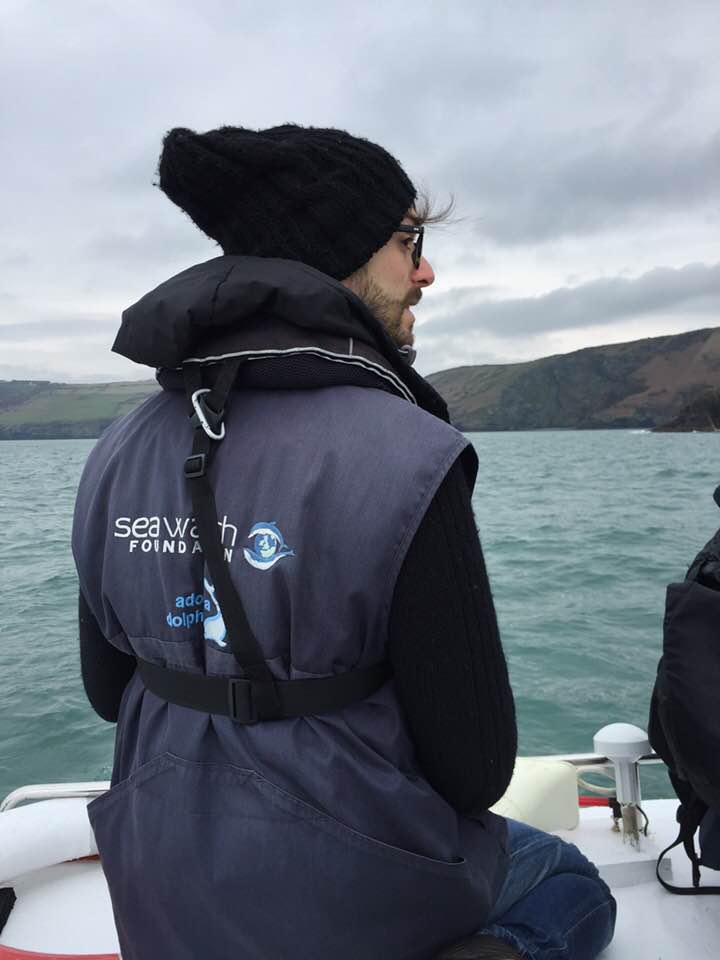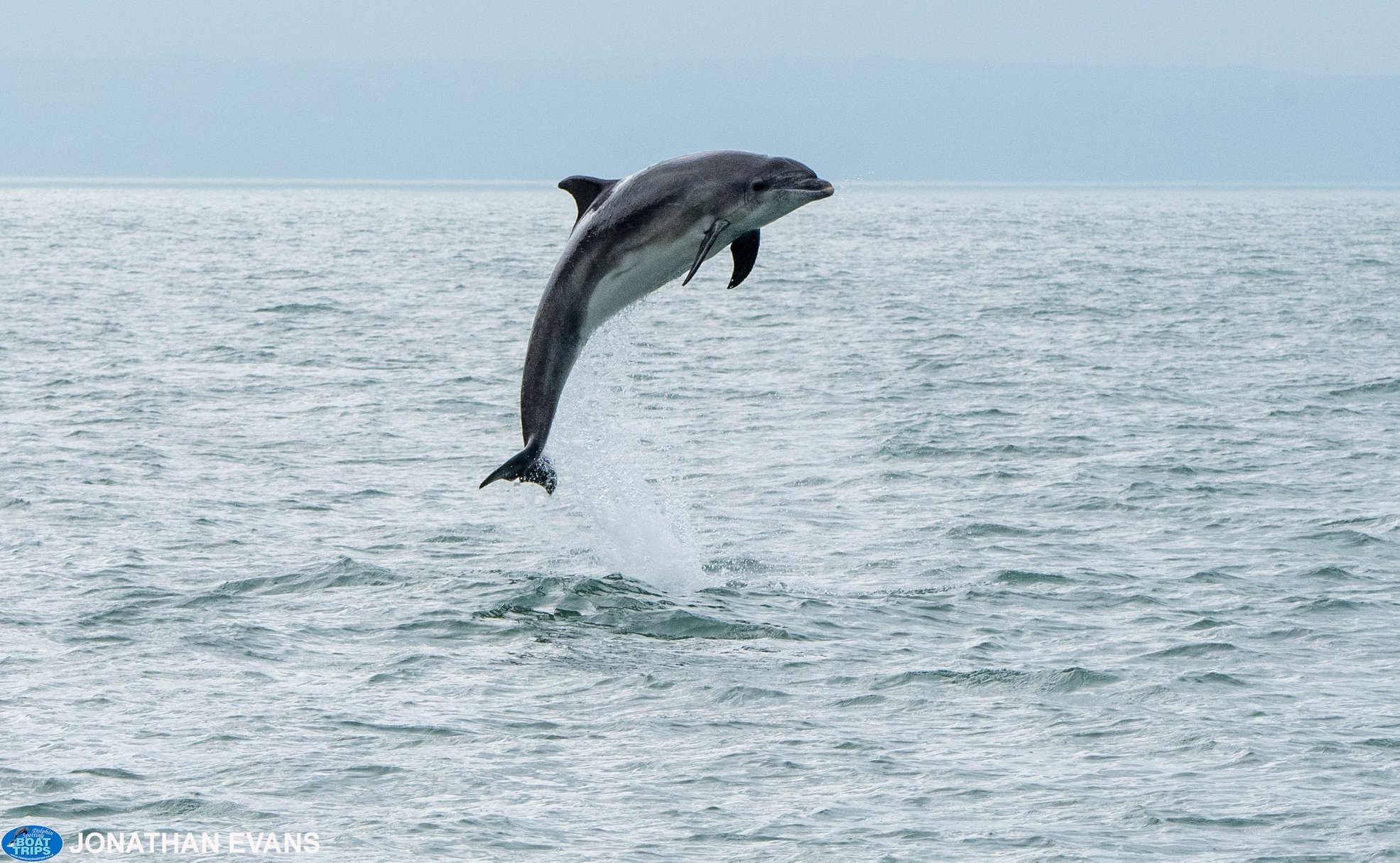With the second round of interns just around the corner, we have asked Massimiliano one of our interns from period 1 (April 9th – May 27th) to tell us a little bit about himself and to let us know how it is to be interning for Sea Watch…
Massimiliano is a painfully long name, I understand that, so I’ll introduce myself as Max. I’m currently taking part in a research internship here in New Quay under the auspices of the Sea Watch Foundation.
Although work with SWF revolves around studying wild marine mammal populations often in the most unpredictable weather conditions, I actually come from a different environment. I don’t really consider myself as an Invasive Alien Species, but back in my home country (which is Italy, by the way), I used to work with captive animals. In fact, I recently completed a traineeship within the Genoa Aquarium, the biggest aquarium in Italy that is home to one of the largest displays of marine biodiversity in Europe. My duties ranged from taking care of dolphins, seals, manatees and penguins, to taking part in their training and dealing with visitors. Whilst I’m glad that I had the opportunity to observe a pod of bottlenose dolphins (T. truncatus) closely, I also experienced mixed feelings about their captive environment.
Cetaceans are powerful swimmers and free divers. Some bottlenose dolphins travel a modest 28 km a day whereas others may cover 100 km or more in 24 hours. Coastal bottlenose dolphins tend to be shallow divers but offshore animals can dive deeper than 450 m1. Other dolphin species, such as the beluga, are known to undertake seasonal migrations and travel more than 3,600 km in less than eight months2. Aquarium tanks are usually less than 10 metres deep and represent only the tiniest fraction of a wild animal’s home range. Enclosed lagoons are usually larger but are still not comparable to wild conditions.
When faced with these circumstances, it’s easy to feel somewhat upset, but animal welfare is a more complex issue. Let’s talk about a thing called habitat enrichment, for instance. It’s highly possible for captive animals to become bored and frustrated because of a lack of stimuli and it’s their caretakers’ job to rectify this issue. This can be done in different ways: adding new objects to the environment (such as “toys”), changing its characteristics, playing with the animals, and even training them. So, although seeing a dolphin jump and perform tricks may sometimes be perceived as a form of exploitation, it can actually be beneficial, as it keeps them active and stimulated.
The enclosed environment also allowed me to easily keep track of them and observe their behaviours. I had a great time working with different individuals and I was fascinated by the way they interacted with each other, displaying the peculiarities that made each of them unique and different from the others. The same task is trickier in the wild, as it requires a lot more planning, patience and… luck!
An important aspect of aquariums and zoos is that they play a key role in educating people about species that dwell in different natural habitats and the threats that they face, hopefully inspiring them to be considerate about their use of resources and more aware of their impact on our planet’s ecosystem. It’s not unlikely that a child, captivated by the diversity of forms in which life has evolved, will grow interested in their protection and maybe become the next conservation researcher.
Personally, I do think that visiting living animal exhibitions played a big role in fostering my interest towards biology, but that being said, I felt the deepest emotions when I encountered them in the wild.
It’s quite easy (and cheap) to hop on a boat trip and stumble across wild marine mammals nowadays, as whale watching has become an important source of income for coastal communities around the UK. In the waters around New Quay, bottlenose dolphins are easily the showiest species. It could be a mother and calf pair swimming peacefully along the coast, or a pod actively feeding and hitting the water with their sides to stun their prey. But let’s be honest. When you’re at sea, a watery blanket surrounds you, hiding perfectly what dwells beneath its blue facade. And what you’re really looking for is a smooth curved back or an unusual splash of water in the distance. Something that tells you there are actually animals hiding out there. It is now that the sense of expectation transforms into excitement… and you start freaking out about all the data you have to record.
Scientifically accurate sightings require a lot of multitasking: you have to keep track of the animals and record information about their distance, position, behaviour, number, group composition, possibly taking some pretty photos in the meantime, to later identify the individuals. But it pays off, as you can witness how they live in their natural element and you know you’re contributing to their conservation and welfare.
I’ve seen dolphins, porpoises and seals here in Cardigan Bay and each of them could choose between interacting with the observers or just keep minding their own business. Luckily for me, they did put on quite a show on my first boat trip! So, I’ll leave you with a couple of fancy pictures from our training week.


























